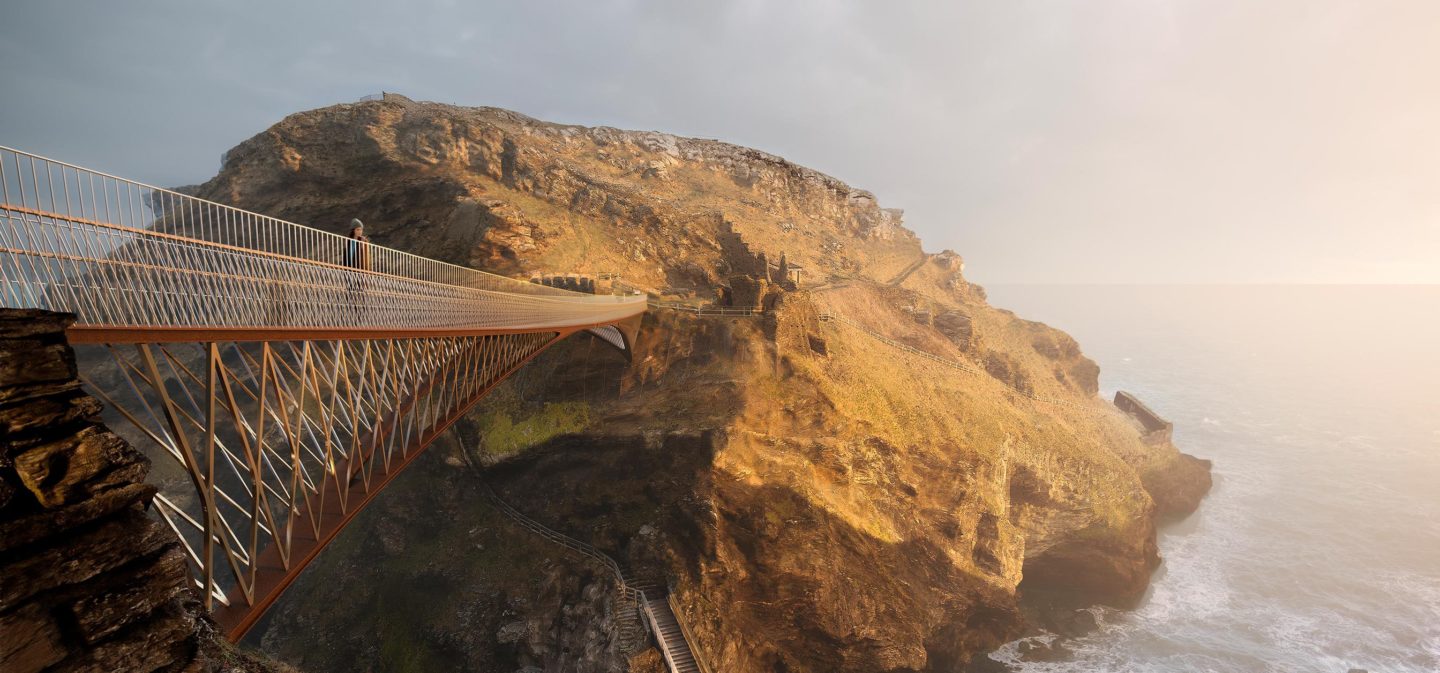One of the most spectacular historic sites within English Heritage’s care and inextricably linked to the legend of King Arthur, Tintagel Castle in north Cornwall has been prized throughout history for its elemental beauty and spirit of place. The ruins of the 13th-century castle are an outstanding example of a man-made monument interacting with a natural feature: the narrow land-bridge, much eroded over the centuries, linking the headland (or Island) with the mainland.
English Heritage, the guardian of this scheduled ancient monument, sought to find a dedicated and talented architectural and engineering team to design a 21st-century connection to the site. This proposed clifftop footbridge will be higher than the current crossing and open up exhilarating views of the Island, coastline and Atlantic seascape as it traces the path of the original land-link.
The competition for the circa £4 million project attracted 137 submissions from design teams across 27 countries. The long-list brimmed with top-tier engineering and architectural bridge specialists. English Heritage was delighted with the response, which exceeded that for other high-profile UK bridge projects with substantially higher budgets.
Six finalist teams were selected to proceed to the second stage and Ney & Partners Civil Engineers in association with emerging architectural practice William Matthews Associates was announced as the winner in March 2016.
The winning concept design is distinctive for its elegant, delicate profile and structural ingenuity, based on two cantilevers, with a poetic gap between the two.
As the team explained,
‘The narrow gap between the cantilevers represents the transition between the mainland and the island, here and there, the present and the past, the known and the unknown, reality and legend; all the things that make Tintagel so special and fascinating.’
The team’s inspiration came from their study of Celtic history and the original drawbridge arrangement of Tintagel. They propose using local slate for the bridge’s decking and contrasting weathered and non-weathered steel to create finishes which allow sunlight to play on the structure but also give it an ephemeral quality, causing the bridge to disappear a little in the view.
The new bridge opened to the public in August 2019.


